First Floor Permanent Exhibition
The history of tiles from around the world is a chronicle of human passion and spirit for embellishing our spaces. Enjoy your journey, as you travel through the ages from 5,500 years ago to the present day - and to the future.
Mesopotamia
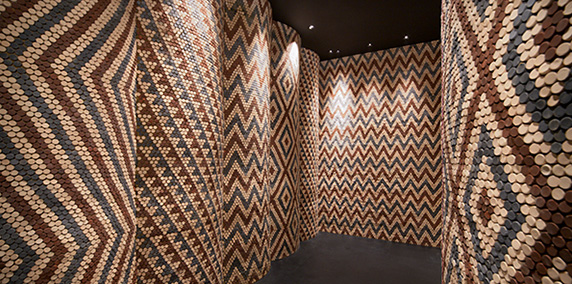
- The Origins of Decorative Walls
- Walls Decorated with Clay Pegs (ca. 3500 BC, Uruk, Mesopotamia)
Cone shaped spikes made of clay, also referred to as clay pegs, were invented by the Mesopotamians to decorate the mud walls of their buildings. We have reproduced patterned mosaic walls using approximately 50,000 clay pegs, all made by hand in the same way they were produced in ancient times. It is thought that more than two million clay pegs were made by the people of Uruk 5,500 years ago to create magnificently designed walls.
Egypt
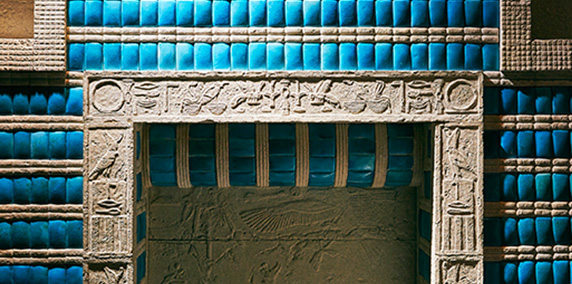
- The Oldest Tile in the World
- The Doorway for the King's Soul (ca. 2650 BC, Egypt)
The original version of this door is located deep under the world's oldest pyramid, the Step Pyramid of King Djoser. It was believed that the king's soul would pass through this door to reemerge into the world. As blue is a color that represents life, it is said that the blue tiles may have been applied as prayers for the king's rebirth. The first tiles produced on this earth still shine today, after over 4,600 years.
Islam
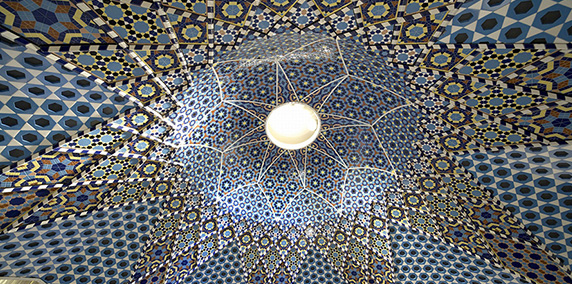
- The Majestic Universe
- Islamic Tiled Dome Ceiling
While they look complex at first sight, the tiles that adorn Islamic mosques and palaces are in fact designed through repetition of geometric patterns that can be drawn with just a compass and a ruler. Here, we have reproduced a domed ceiling with a tile pattern created in a feat of geometric genius, using only ten shapes of mosaic tiles.
The Netherlands
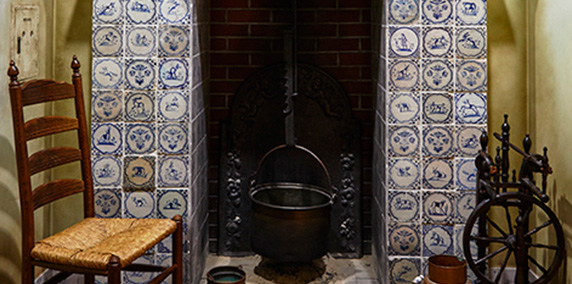
- Emergence of Tiles in Homes
- Blue and White Tiles (17-18 century, The Netherlands)
While tiles were mainly used in places of worship in the world of Islam, Dutch citizens who made their wealth through global trade started incorporating them modestly into their daily lives. Inspired by Chinese porcelain, the blue and white tiles patterned with familiar themes such as flowers and scenery were most popular.
England
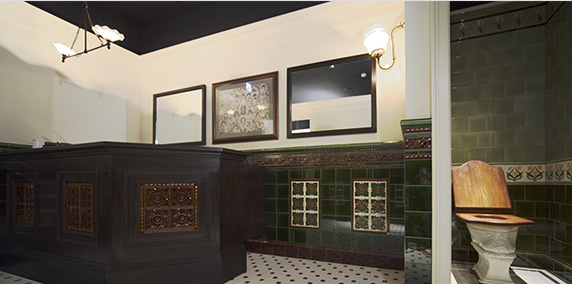
- The Growth of Decorative Tiles
- Victorian Tiles (1830-1903, England)
The British middle class who became prosperous from the Industrial Revolution started using tiles generously. Colorful tiles with art nouveau style design, the artistic trend of the time, were used broadly from public buildings to homes. Around this time people began to fulfill the desire to decorate their rooms beautifully, a trend that continues to this day.
Japan
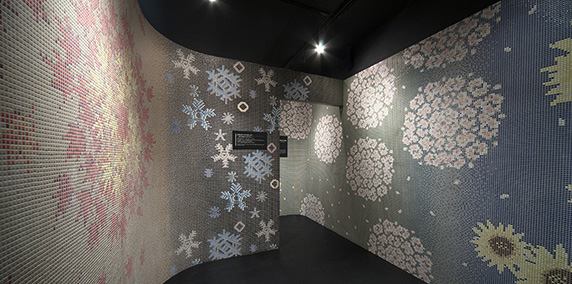
- Refining Tile Decorations
- The Modern Japan Experiments
There is no end to the human desire to embellish walls. While the method of expression may differ over time, decorations will continue to be a part of life. The art of creating spaces by combining small pieces of tiles will continue to be a part of people's lives, evolving over time.